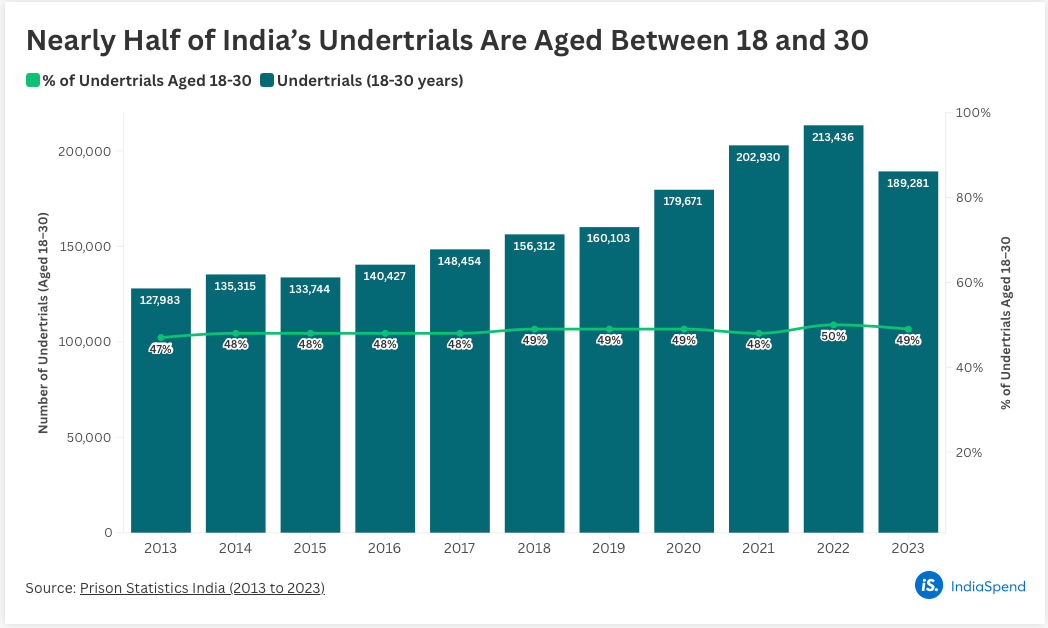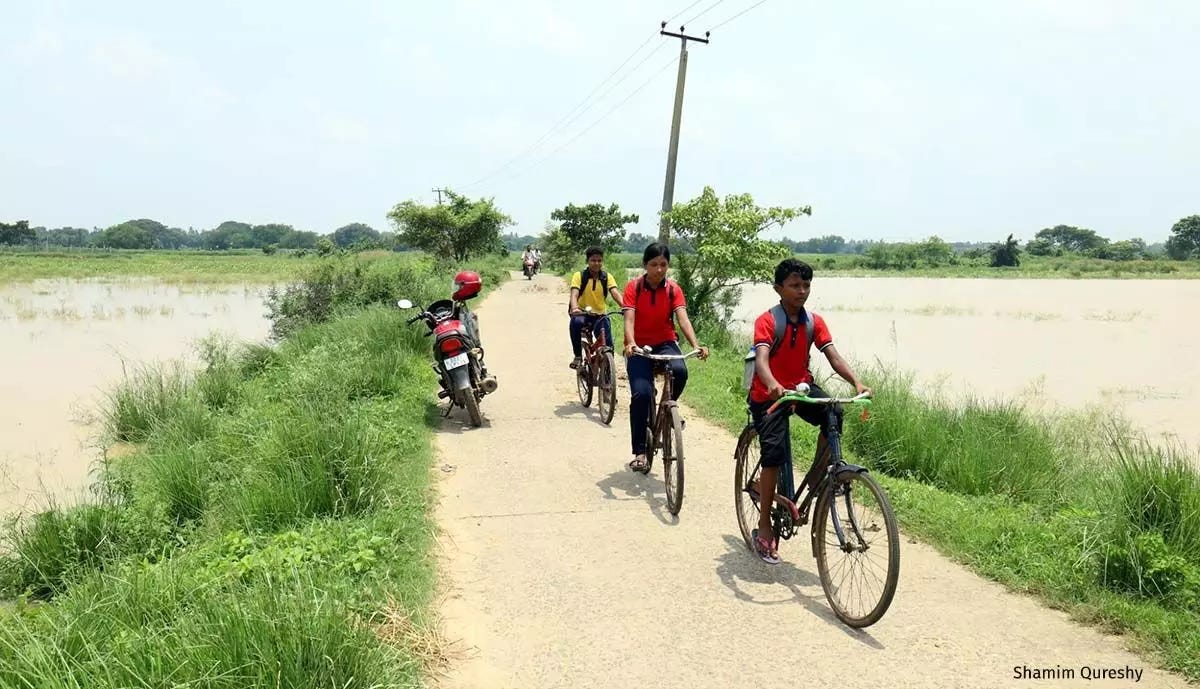The Crisis Behind Bars
This week, the continued incarceration of India’s marginalised youth, and how climate disrupts school education
Dear Reader
The National Crime Records Bureau (NCRB) compiles data on crime, accidental deaths and suicides, and India’s prisons. By mid-year, these annual reports–which are critical to understanding the efficiency of the justice system–are released.
The latest edition, for 2023, came out late last month, and we at IndiaSpend are studying them to bring you insights beyond the headline numbers. We begin this week with India’s prisons, which remain overcrowded, with three in four prisoners still under trial.
Elsewhere, with the retreat of the Southwest Monsoon, and as south India braces for the Northeast Monsoon, we look at the impact of school closures due to extreme weather, and how that affects learning.
Prisons Under Trial
More than half a million Indians are in prisons across the country, but three in four (74%) are still under trial. Half of India’s undertrials had spent between three months and two years in prison. In comparison, in the European Union, the average length of pretrial detention varied from 2.4 months to 12.9 months.
Prisoners from marginalised groups have it worse–poverty, lack of education, and lack of access to good quality legal aid means many of them are stuck for reasons as varied as being unable to post bail or pay small fines, provide sureties, and in some cases, even apply for bail which they would be eligible for.
Sunil Gupta is a former jailor and legal advisor of Tihar jail, whose story is the basis for the Netflix series, Black Warrant. Last week, in our story on the mental health of death-row prisoners, Gupta said it is first time offenders or those wrongly incarcerated who are more susceptible to mental health issues and suicide. Even after three decades as a jailor, he experienced a “negative” feeling while entering a jail, he told us.
This is pertinent because nearly half of India’s undertrials are aged 18 to 30 years. This means that several thousands of young Indians, many of them possibly innocent, are spending the prime years of their lives behind bars, waiting for courts to adjudicate their cases. Shreehari Paliath reports
Learning Interrupted
School closures due to extreme weather are becoming more frequent. Cyclones, drought, floods and heatwaves–all lead to a disruption in learning. Some schools are directly hit and take weeks or months to recover, while others serve as temporary shelters as homes are submerged or damaged.
Repeated school closures due to weather emergencies exacerbate learning gaps, and research shows that these learning losses could have long-term disruptive impacts and may last through generations.
Further, school disruptions from extreme weather could lead to drop-outs, especially in the secondary and higher grades, when children take up paid work to substitute family incomes. Adolescent girls are particularly affected, being susceptible to early marriage, trafficking and gender-based sexual and physical violence.
In two decades to 2018, more than 12,000 extreme weather events led to losses worth $3.5 trillion. But what’s hidden in these numbers is the disruption to lives, livelihoods, and as Tazeen Qureshy reports from Odisha’s Ganjam, education.
That’s all we have for you this week. From all of us at IndiaSpend, we wish you a happy Diwali.




